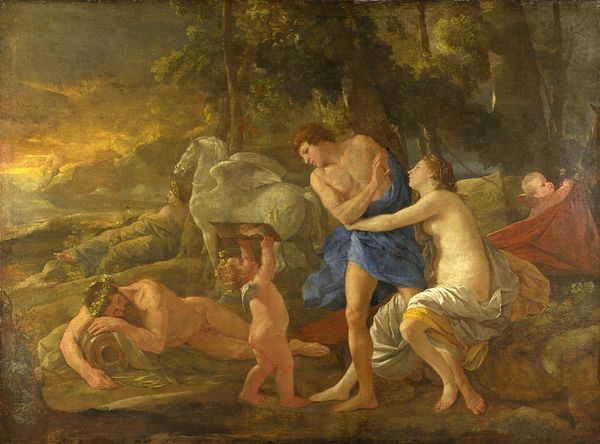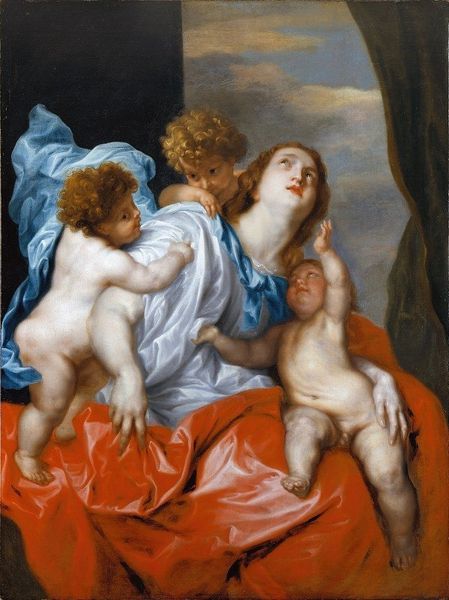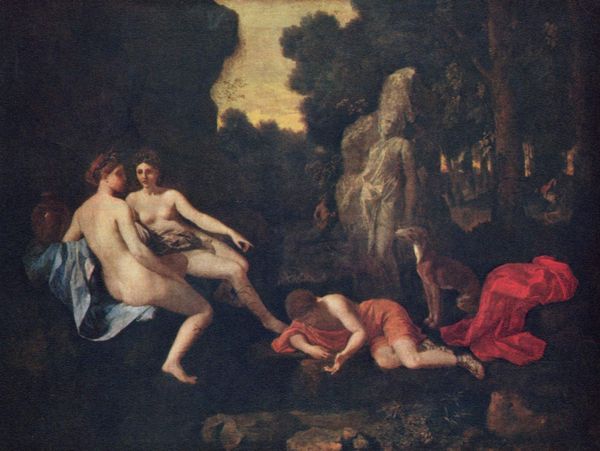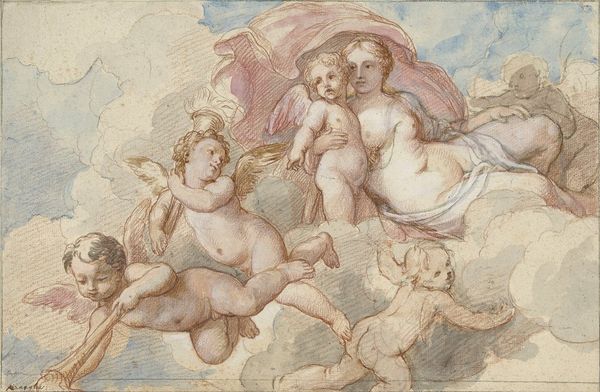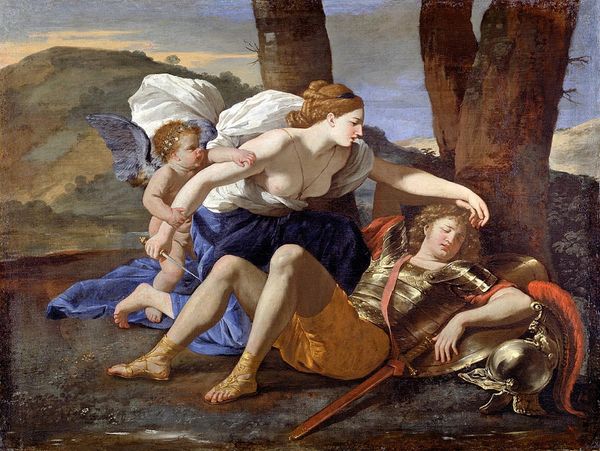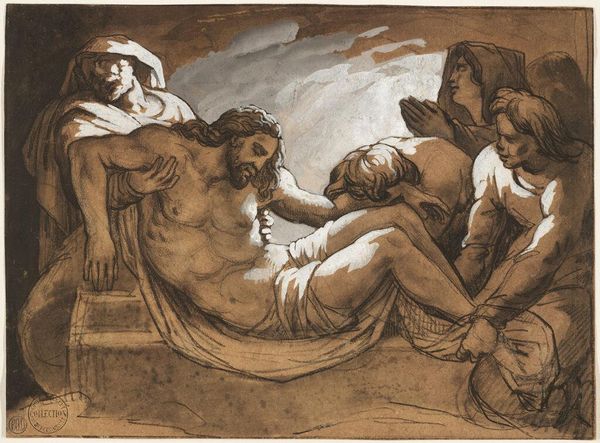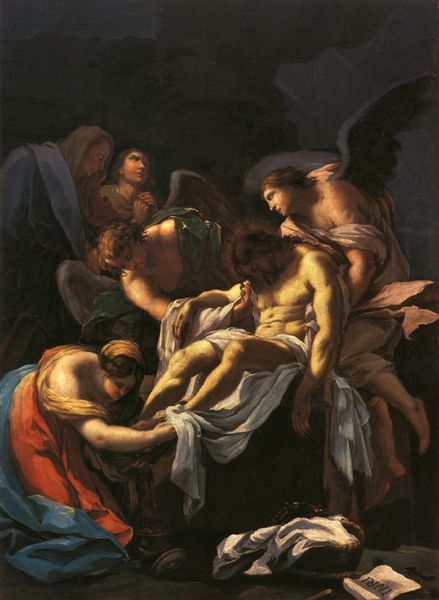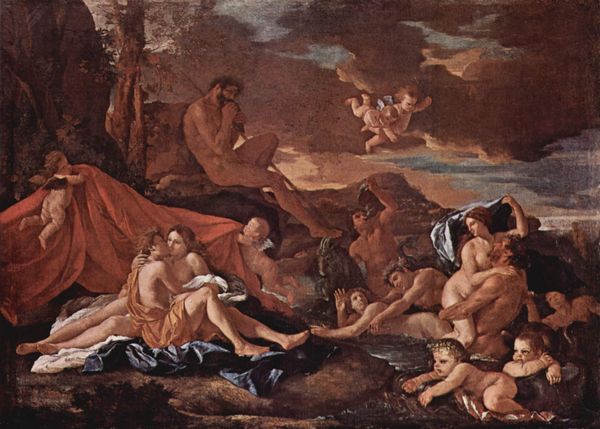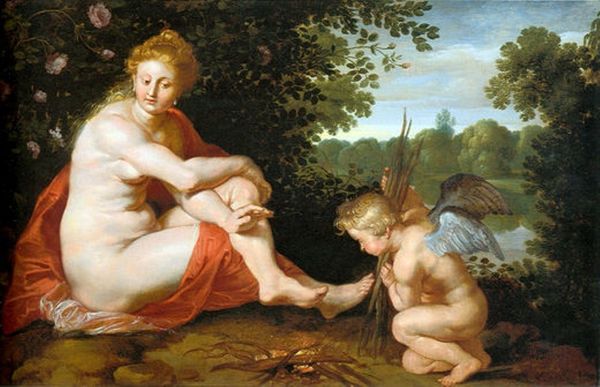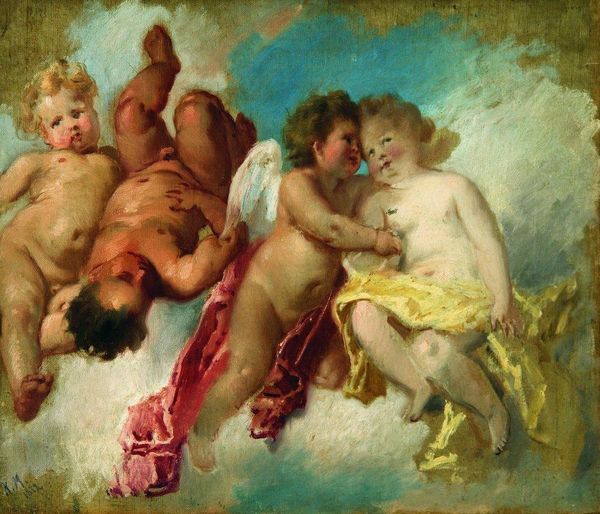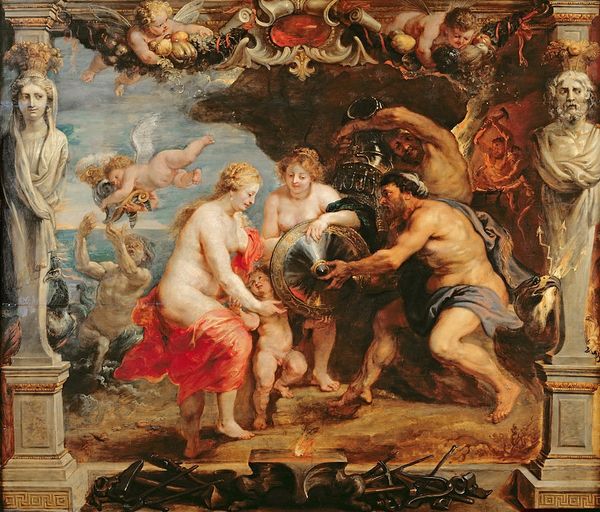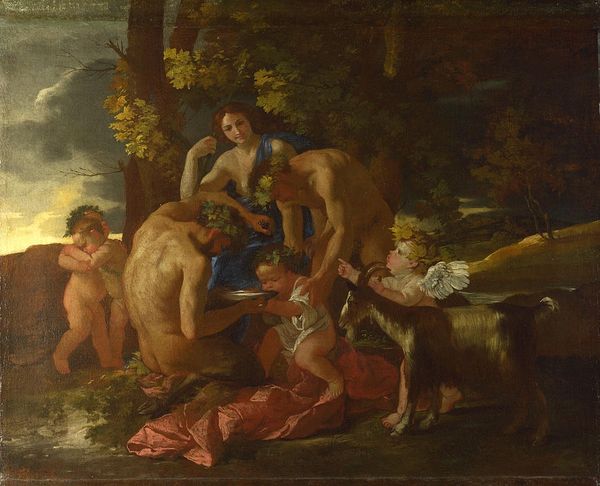
painting, oil-paint
#
allegory
#
painting
#
oil-paint
#
landscape
#
figuration
#
oil painting
#
romanticism
#
mythology
#
painting painterly
#
history-painting
#
nude
Copyright: Public Domain: Artvee
Eugène Delacroix made this oil on canvas painting, Study For L’agriculture, in France in the early to mid-19th century. It depicts allegorical figures of agriculture surrounded by cherubic children, a common trope in academic art of the time. Looking at the history of France, particularly the era in which Delacroix was working, one can better understand the social implications of his art. In post-revolutionary France, there was an intense debate about what public role art should fulfill. As one of the leading French Romantic painters, Delacroix was a key figure in the transition from Classicism to Romanticism, and this painting exemplifies that shift. It uses allegory to communicate ideas but emphasizes vibrant colors and movement. The painting’s themes reflect the rise of industrialization and urbanization. With agricultural scenes, Delacroix reminds viewers of the fundamental importance of the land. Art historical research into Delacroix's influences, like the works of Rubens, combined with socio-political context can help us interpret this artwork.
Comments
No comments
Be the first to comment and join the conversation on the ultimate creative platform.
